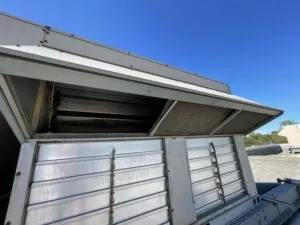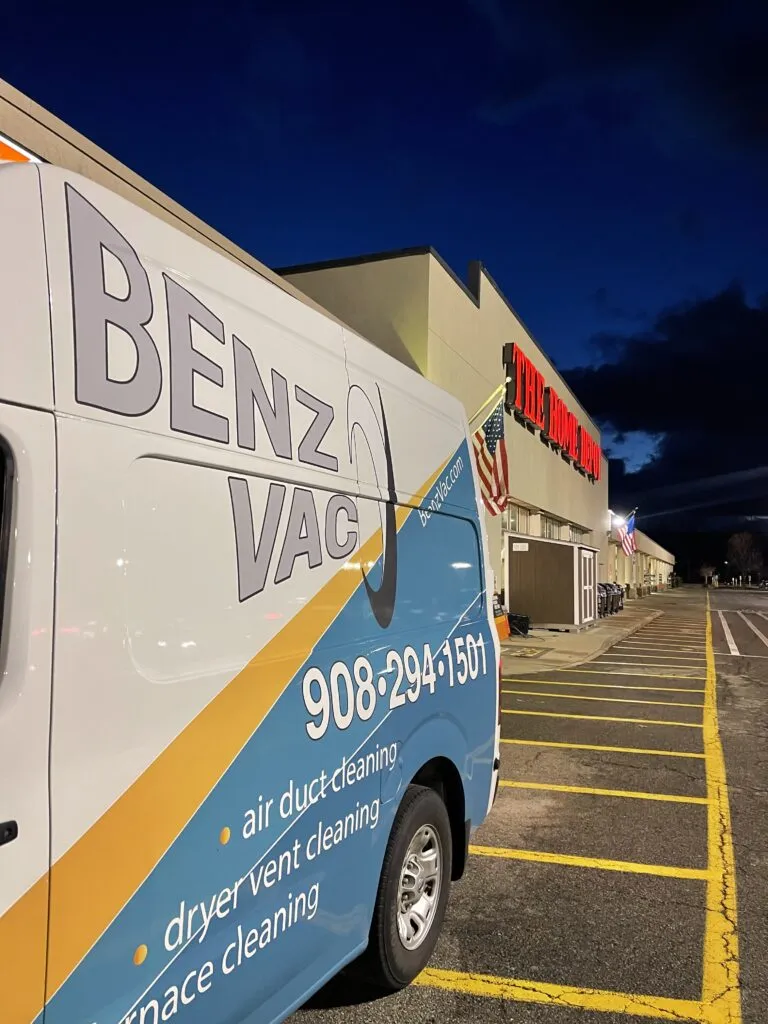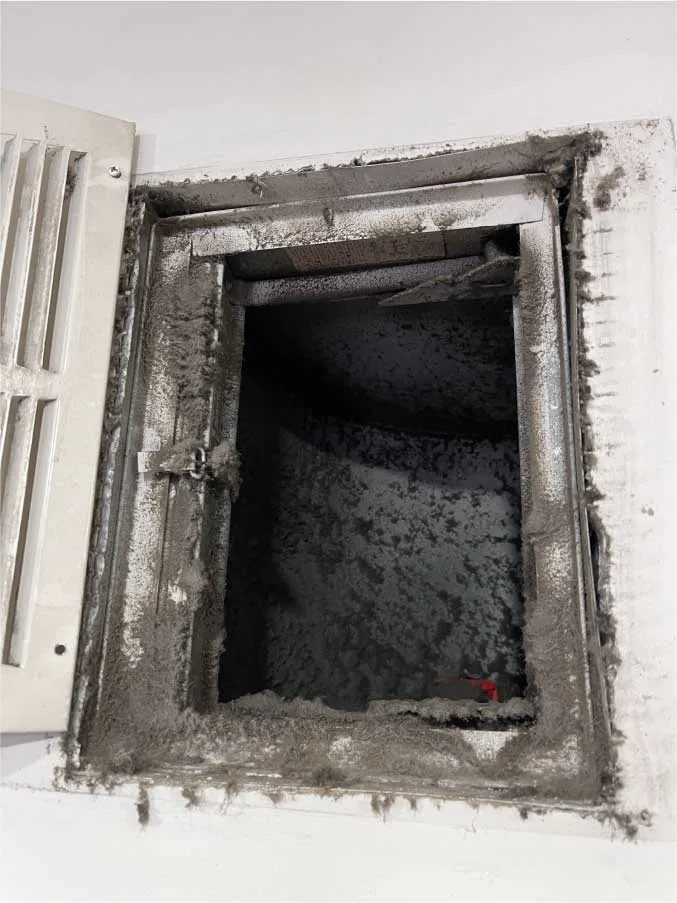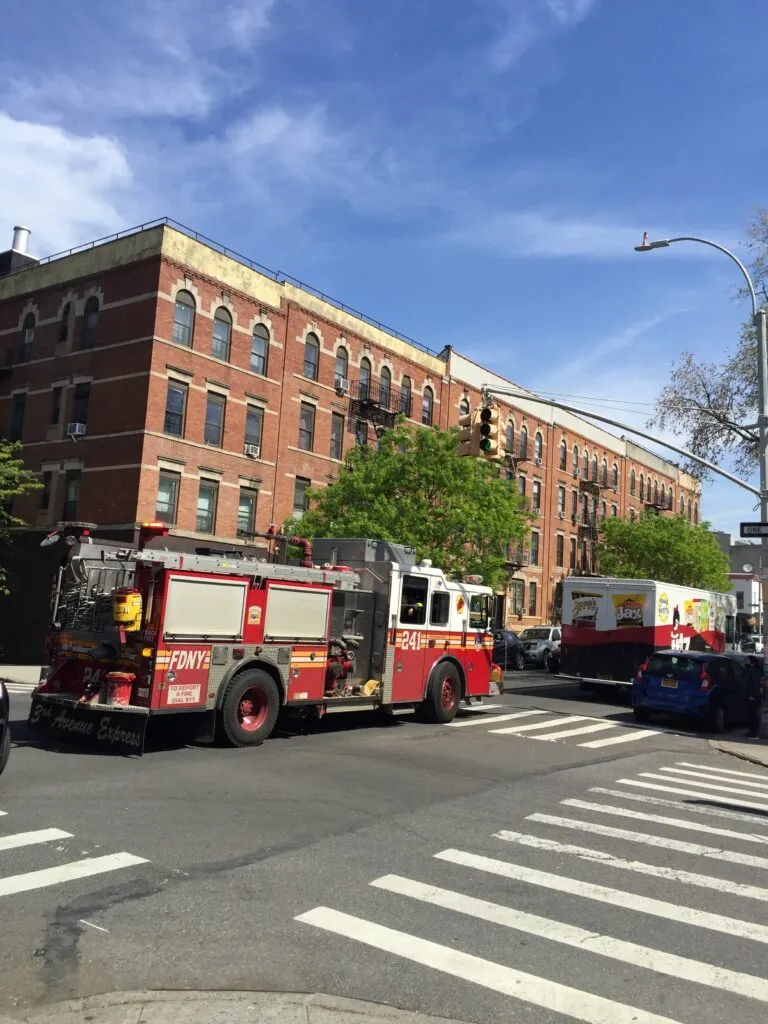Air Ducts in Retail Shops and Malls
How do they clean air ducts in retail shops and malls, how do they work in general?
Shopping malls should be comfortable, not merely “needing” air conditioning, but allowing customers to enjoy their time in a pleasant environment while they shop. Such a store atmosphere not only attracts customers but compels them to stay there for a longer time.
A study shows that shoppers spend more money if they remain in a store for a longer period of time. A shopping mall’s air conditioning system must be able to offer the appropriate level of comfort throughout the year while also allowing for the appropriate energy usage.
Thus, an air-conditioned atmosphere is necessary for today’s incredibly competitive retail industry, including malls, supermarkets, or retail shops, to provide a pleasant environment and a top-notch shopping experience.

Commercial HVAC Duct Designs: Air Ducts in Retail
Many parts are responsible for the effective functioning of an HVAC system. Not to mention that the ductwork is an important link in this.
The following are the kinds of HVAC ducts used in commercial buildings:
- Air Ducts Made of Fiberboard
Boards made of compressed resin attached to inorganic glass fibers are used to make fiberboard air ducts. On the outside, there will be a foil face to prevent water from collecting. They are the least expensive kinds of air ducts and offer acoustical and thermal advantages as well.
- Air Ducts with Fiberglass Lining
The interior or exterior of some air ducts in retail are then further insulated with fiberglass. The insulated fiberglass coating is there to prevent condensation or to guard against heat loss. Additionally, a fiberglass liner reduces the noise produced by the HVAC system as a whole.
- Sheet Metal Air Ducts
These rigid air ducts, which are made of aluminum or galvanized steel, are the most widely used kind. Sheet metal air ducts in retail, which come in a range of designs like circular, rectangular, or oval, are the most resilient. Additionally, they are less likely to have mold growth or mildew development because of their non-porous nature.
- Flexible Air Ducts
These are made with a 2-ply polymer plastic shell surrounding a spring steel wire helix. It’s essential that you keep the airways as brief and straight as you can when utilizing these ducts. You decrease the routes and boost system effectiveness with this method. In addition to being inexpensive and lightweight, flexible air ducts in retail are easy to install.
Commercial HVAC ducts need to be adequately sealed and insulated. As a result, there is no air loss at the connections. Your monthly energy costs will increase dramatically if there is any air loss at the connections.
Air Ducts In Retail Shops: Air Ducts in Retail
Heating, ventilation, and air conditioning (HVAC) systems are the foundation of a building’s mechanical system that provides the occupants with thermal comfort and a high level of indoor air quality.
Depending on the number of zones, location, and distribution, HVAC systems can be divided into central and local. Equipment for ventilation, heating, cooling, or air-conditioning systems is considered a major HVAC component.
- Local HVAC Systems
Local HVAC systems don’t need ductwork and can be placed inside or next to conditioned spaces. Local systems include split systems, local heating, local cooling, and local ventilation.
- Central HVAC Systems
A delivery ductwork’s main function is to transport the conditioned air from central HVAC systems, which are located outside of buildings in a central equipment room. All-air, air-water, and all-water systems are components of central HVAC systems. Water-source heat pumps and heating and cooling panels are two examples of central systems.
How Do Air Ducts in Retail Shops Operate? Air Ducts in Retail
Three elements are needed to regulate the climate of a business building: warm or cool air; a distribution system; and controls. The same thermostat controls both the heated and cooled air in the building, which circulates through the same ducts. However, the source will vary.
- Cool or Warm Air
The combustion gas produced by the burners in commercial HVAC systems is delivered to a heat exchanger, which in turn heats the passing air. Outside heat can sometimes be brought inside by heat pumps. Heat is transferred from inside to outside through air conditioners, which operate in reverse of heat pumps.
A boiler system is used in some commercial buildings to heat water, and pipes are put in the walls, floors, or ceilings to transport the hot water. The structure itself may not seem too warm, but the air will be warm.
- Distribution
In a building, the air is circulated through ventilation, with warm air rising and cool air falling. Air is continuously inducted and evacuated, some of it thermally modified.
- Controls
Using programmable thermostats, commercial buildings can control all of these components throughout the day as they would in residential settings. There is also the possibility of using direct digital controls with commercial HVAC systems, which are a bit more complex.
Buildings with modern controls are more energy efficient and productive. Sensors are used by a central computer to track and automate lighting controls as well as temperature schedules.
The main workstation allows users to access performance updates, troubleshooting, and maintenance, where they can manually change settings and answer questions. The DDC is costlier due to its intricacy and versatility.
Temperature offsets can be used to reduce energy consumption by anywhere between 5% and 20% using both simple controls and DDC. During temperature setbacks, neither heating nor cooling is needed, such as following the end of the workday.
Virus Spread by Ventilation or Air Conditioning: Air Ducts in Retail
Centralized and closed-system climate control and ventilation systems are generally used in high-occupancy commercial properties, such as stores, hotels, schools, malls, restaurants, office buildings, etc.
In engineering controls, air cooling and ventilation are regarded as efficient control measures for preventing workplace illness and infection. An occupational health framework is used to prioritize the controls needed to protect human health. It is also applicable to indoor health risks.
The probability of transmission shouldn’t be high if a ventilation system is maintained adequately. A well-maintained system implies that the system is regularly examined, the most effective filters are utilized, the filters are changed in accordance with manufacturer guidelines, and the air ducts in retail are frequently cleaned.
A poorly maintained and operated air conditioning or ventilation system may be able to spread viruses both by recirculating contaminated air and/or by creating favorable environmental conditions (temperature and humidity).
The best filters should be used in facilities with central ventilation and/or climate control systems. If the air handler is rated for such a filter, think about installing a better efficiency filter or, in healthcare institutions, a HEPA filter that successfully collects viruses. The installation and maintenance of filters should follow the manufacturer’s instructions. For household use, high-efficiency filters are also offered.
In a nutshell, the transmission of viruses is unlikely to increase with properly maintained and operated air conditioning, ventilation, and climate control systems. When it comes to proper maintenance, one of the most important aspects is HVAC duct cleaning.
An air conditioner or HVAC system circulates contaminated air only when the ductwork is filled with mold growth, dust, dirt, debris, or pet dander. Timely HVAC duct cleaning ensures that no particulate matter remains inside the duct.
What do Air Ducts Systems Do?
Modern commercial duct systems are single-duct systems that centrally heat or cool air to the desired temperature. The air is then distributed to each zone using a different thermostat by the system. The air travels through a reheating terminal to get the appropriate temperature for this zone before venting into it.
There will be areas in your building where heat loss to the exterior will be different, so separate zones are essential to avoid having alternately cold and warm rooms. Each zone receives the same amount of air that is pumped into it. If not, each zone’s pressure would increase to an unpleasant level and your HVAC system would quit working. As a result, a register that draws air through the returning ducts is required in each zone.
This air is directed through a return fan, which sends it in two directions: partially to the main HVAC system and partially to a building exhaust. The latter portion of the air combines with fresh air from the outside to maintain comfortable pressure throughout the entire facility.
This freshly mixed air is then heated or cooled to the proper temperature after passing through a filter. In order to complete the circuit, the air is then pushed to the supply fan, which pushes it into each zone.
Damage Done by Dirty Ducts
Your commercial facility’s dirty ducting can have several negative effects:
- A rise in the number of airborne particles, such as dust, pollen, and mold.
- The need for more regular air filter replacements in HVAC systems.
- The accumulation of dust and other debris on shelves, machinery, goods, and other items.
- Deteriorating indoor air quality, which may include odors.
- HVAC system efficiency and output declines are linked to clogged filters and dirty parts.
- A greater likelihood of allergy or asthma attacks among employees and customers as a result of poor air quality, as evidenced by coughing, sneezing, eye and nose irritation, and other symptoms.
Advice for Air Duct Cleaning: Air Ducts in Retail
Numerous authorities advise yearly duct cleaning to go along with HVAC system upkeep. This is a reasonable timetable, but you should be prepared to think about having your ducts cleaned more frequently if, for instance, your business activities tend to produce more toxins or particulates that could build up in your ducting.
When identifiable mold growth appears in the ductwork, on HVAC system parts, or any other section inside the HVAC system, the U.S. Environmental Protection Agency suggests vent and duct cleaning. Also, the ductwork has accumulated material to the point where it obstructs airflow and makes HVAC equipment inoperable. Duct cleaning becomes essential when animal and insect biological material is found infiltrating ducts.
Components of Commercial Ductwork
- Duct Fittings
Airflow is balanced and duct pressure is equalized through fittings and configurations like ells, tees, and reducers. The reducer, for instance, is used when changing the size of a duct.
A vent cap, which shields the exposed end of a ductwork vent stack, is another ducting fitting. Every fitting and arrangement enhances the functionality of commercial ducting as a whole.
- Stack Boots and Heads
The foundation of ductwork is composed of stack boots and heads. Air flows vertically through stack boots, which are commonly called vertical ducts. Meanwhile, a stack head connects narrow ducts on the wall to a regular wide round or rectangular duct. Air flows into a wall-mounted register head rather than a stack head. Stack heads are connected to ordinary ducts to and from.
- Isolators for Vibration
In the majority of ductwork systems, the air handler is always joined with blowers. Blowers facilitate air movement while also contributing to noise pollution. The ductwork is made to fit two vibration isolators so that vibrations won’t be transmitted to the building’s occupants.
In simple terms, a vibration isolator is a stretchy material with a canvas-like texture. It permits air blowing while reducing undesired vibrations.
- Vents
The margins of vents are often positioned in the ceiling so that they match the opening in the duct above. Vents enable warm or cold air to be distributed into the rooms beneath as it flows through the business ducting.
- Take Offs
Most ductwork branches out from the main duct into multiple ducts. The air source, which is positioned beneath the air handler, supplies air to several openings called diffusers, registers, and grilles. Take-off fittings assist in moving air from the mother duct into subsidiary ducts.
The takeoffs are frequently positioned in each subsidiary duct’s circular or rectangular openings. By means of tiny metal tabs, they (takeoffs) are attached to the mother duct. To provide a secure attachment, the metal tabs are bent. The spin-in attachment technique is used to attach round take-offs. The snap-in connection technique is used to link other versions.
- Fire and Smoke Dampers
Smoke and fire dampers are necessary for ducts that are installed through or close to a firewall. Fire and smoke dampers function in different ways. Depending on the HVAC-R contractor’s design, they could be positioned close to one another or farther apart.
Electricity is required for smoke dampers to work. An actuator or motor triggers them. To connect the fire damping system to the ventilation system, the motor is connected to a probe inside the duct. Smoke dampers can identify smoke emitting from the incoming air or supply air. On sensing smoke, the actuator is configured to shut the air damper.
The Advantages of Commercial Air Duct Cleaning for Retail Stores
- Healthy Environment-Healthy Staff and Customers
Over time, impurities like dust, grime, and filth build up in your air ducts. Neglecting commercial vent and duct cleaning might result in impurities spreading bacteria and foul odors throughout your retail area. Not only do these particles spread in the air, but they also harm people who inhale the contaminated air.
The air ducts in retail play a crucial role in spreading particulate matter in your store environment.
The dusty particles trapped inside the air duct of your HVAC system are thrown into the air whenever the system is on. These air contaminants trigger respiratory issues in people and create bigger problems for those with asthma or other allergies. It is clear now that dirty ductwork can put the health of your staff and customers at risk. This can, in turn, affect sales.
One of the best solutions to this serious problem is to have a regular HVAC duct cleaning service from a professional air duct cleaning company, as these companies have specialized tools to inspect and eradicate the particles from your air duct.
Clean air ducts ensure a healthy workplace. This is why retailers should never overlook the importance of vent and duct cleaning.
Well-Cleaned Store: Air Ducts in Retail
The retail industry is one of the most competitive industries globally. Retailers have to offer convenience and comfort to retain their customers. For instance, they offer deals, coupons, discounts, premium offers, gifts, online delivery services, etc. And among these strategies, one of the important strategies to retain customers is to offer them a great store experience that includes a well-maintained and clean store.
If the store is not clean, it will certainly put off the customers. Especially after COVID-19, people have become extra cautious regarding their health. Poorly ventilated spaces offer the risk of virus spread. Customers will not like to enter a store that can put their health at risk. This is why it is extremely important to maintain cleanliness in your store and provide healthy breathable air to your customers.
Retailers can make this possible with frequent HVAC duct cleaning. Frequent duct cleaning will ensure that the ductwork is clean and regulate clean air in the store. It is recommended to contact professional air duct cleaning services for a proper duct cleaning procedure. Your regular technicians can damage the system as it is not possible to closely look inside the HVAC system without the use of specialized tools.
Keep Energy Efficiency High: Air Ducts in Retail
Assuring that your air ducts in retail are always clean is a simple approach to keeping them working effectively. You’ll also notice that your shop uses less energy after your duct cleaning service. Less energy usage means lower energy bills.
Final Thoughts: Air Ducts in Retail and Air ducts cleaning
Air duct cleaning is indispensable for commercial and residential properties to ensure the good health of their residents. The ductwork system plays a crucial role in deteriorating the indoor air quality and filling it with particulate matter. Regular maintenance and HVAC duct cleaning in shopping malls and centers can help with improving indoor air quality and maintaining the heating and cooling temperature.




